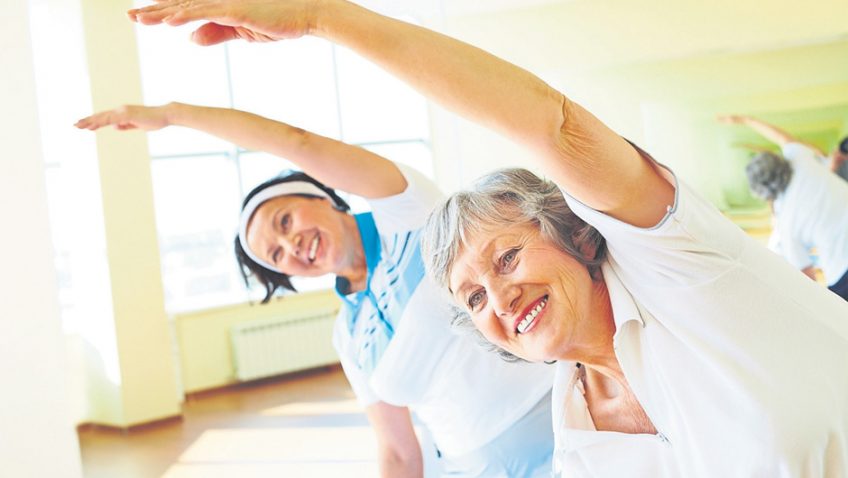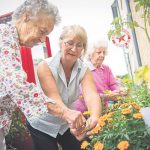Jess Kuehne leads the Centre for Ageing Better’s programme on physical activity. Here she tells MT how we can build our strength and balance as we get older, and why it’s so important.
Many people believe that becoming frailer, less independent and less able to do daily tasks is an inevitable part of ageing. It’s true that as we get older our muscle strength starts to decline, our bones get more brittle and our balance gets worse. For example, from the age of 40, we lose 8% of our muscle mass per decade, and this decline is linked to our ability to carry out activities of daily living and increases our risk of having a fall.
Fear of falling
Falls are common among people in later life and can have a big impact on individuals. They result in over 200,000 hospital admissions every year and are the single most common cause of hip fractures. Even when a fall doesn’t lead to an injury, many of us who have fallen lose confidence and fear having another fall, which can make us less likely to want to move around or go out and can lead to feelings of loneliness and isolation.
But disability and frailty in later life can be delayed or prevented. An article in the British Medical Journal showed how regular exercise can allow us to ‘drop a decade’ in terms of our ability to get up and move, which helps us stay independent and avoid unnecessary social care.
There are several ways you can keep physically active, build stronger muscles and have better balance:
- Break up and reduce the amount of time you spend sitting down by walking around, making a cup of tea or taking a stroll in the garden.
- Be active. In this context, this means taking part in 150 minutes of moderate activity or 75 minutes of vigorous intensity activity (or a combination of both) each week. Moderate activity includes anything from brisk walking to ballroom dancing; any activity that makes you feel warm and your heart beat faster, but during which you can still carry on a conversation. Vigorous activities are those that make you feel much warmer and breathe much harder, making it difficult to carry on a conversation, such as going for a run or walking up the stairs.
- Building up your strength and balance is probably easier than you think. Daily tasks such as carrying heavy shopping or a spot of heavy gardening – such as digging – are all very helpful. Taking up tai chi, dancing, golf, lifting weights, doing push-ups and sit ups are all good activities, as are yoga and Pilates.
You might read this and think, “there’s no way I’m ever going to follow this advice, so why bother?” But even just a little bit of physical activity – say 30 minutes a week – is better than none, and the more physical activity you do, the greater the health benefits; a brisk ten-minute walk every day can lift your mood and will help lower the risk of some serious illnesses.
Keeping physically active in later life is so important and could make the crucial difference between living well at home and being dependent on social care or a care home. So, the key is to keep moving!
Jess has a Master’s in Public Health from the London School of Hygiene and Tropical Medicine and 10 years’ experience advocating for policy and legislative change on a variety of health issues, including tobacco control, tuberculosis and diabetes.
The Centre for Ageing Better is an independent charitable foundation that works to bring about change to improve later lives, bring fresh thinking to the challenges and opportunities that society faces as more people live longer, and to develop, share and apply evidence to help people age better.





